Is construction taking slave labour seriously?
30 November 2021
The International Labour Organisation estimates that 4.5 million people are currently working in construction against their will. KHL’s Lucy Barnard finds out how the common practice of parcelling out work to contractors and sub-contractors leaves the system lacking accountability and open to abuse
When skilled construction worker, Frank – not his real name – lost his job in his native Barbados, he jumped at the chance of a job in the UK earning £600 (US$800) a week offered by an acquaintance.
But as soon as he and his young son landed, it became clear that he had made a terrible mistake.
“They took us back to this house and they let me know the business,” Frank told slavery and exploitation charity Unseen. “If I don’t do the work, they were going to kill my son. I had no choice. My son was 14 years old, in a strange country. He don’t know what’s going on.”
Forced to work long hours with only meagre amounts of food, Frank quickly became one of an unseen army of modern slaves labouring on construction sites around the world.
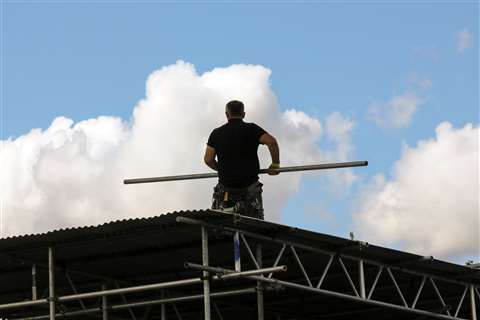 A construction worker carries a scaffold pole on the roof of a house in London - Reuters
A construction worker carries a scaffold pole on the roof of a house in London - Reuters
“I used to be in the back of the van with the tools and we drive all over,” Frank says. “I was getting up at five in the morning until six at night. Going out in extreme weather conditions. Working in snow with no proper clothing or equipment. I was hungry to the point where you have conversations with your stomach. Lifting 500-600 blocks from one scaffolding to another scaffolding, stirring concrete. Tiling roofs, building walls – boy it was hard.”
Although Frank frequently came into contact with the people paying for the projects he was working on, he says they did little to investigate his situation.
“When they come in, you’re gone,” he says. “They don’t care who’s doing the work, they just pay to get the work done. A lot of people used to pass me, and they didn’t even know. They didn’t know that I was pulling out those walls and stuff for nothing.”
Eventually, after three and a half years, Frank says he became dangerously ill. His captors drove him and his son to a strange neighbourhood and dumped them in the street. Luckily, a passer-by helped him to hospital. From there he was taken to a safe house.
Slavery in the construction industry
Frank’s story is far from unique. According to the International Labour Organization (ILO), the UN agency charged with setting labour standards, three out of every 1,000 people around the world are suffering in forced labour at any given point in time, with the construction industry responsible for an estimated 4.5 million cases – the second highest category after domestic service.
Campaigners say that the global construction industry’s reliance on a system where main contractors employ very few workers directly, passing down work through layers of sub-contractors and sub-sub-contractors leaves it lacking accountability and open to abuse.
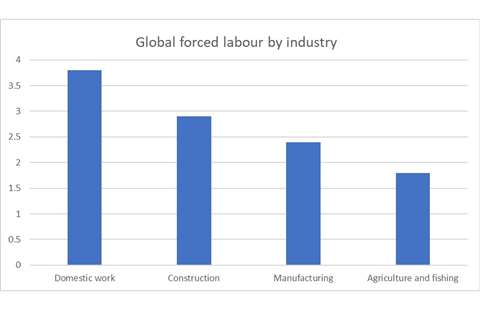 Estimated numbers of people (in millions) in forced labour by global industry- ILO
Estimated numbers of people (in millions) in forced labour by global industry- ILO
“Construction is an extremely high-risk industry for modern slavery,” says Rocio Domingo Ramos, business and human rights policy and research officer at Anti-Slavery International, the world’s oldest human rights organisation.
“Modern slavery in construction is a risk in every country. Of the US$150 billion profit generated annually by forced economic exploitation around the world, US$34 billion (23%) is made in the construction, manufacturing, mining and utilities industries.
“Outsourcing, unethical recruitment, on-site exploitation, and construction material sourcing are all high risk. Migrant workers are also at a high risk on-site.”
Modern slavery
Modern slavery is happening in every country and on every continent, says Pamela Zielinski, construction programme manager at Stronger Together, a business-led initiative aiming to reduce modern slavery. “In countries like the US or the UK these are often individuals tricked or coerced into slavery by criminal gangs. Elsewhere in the world, workers can be led into modern slavery via debt bondage related to recruitment fees.
“We know that main contractors typically have long and fragmented supply chains with little visibility beyond tiers one and two. They are also heavily reliant on temporary and migrant labour, significant indicators of risk,” she adds. “It dismays me that people are not recognising the prevalence of these practices across the industry.”
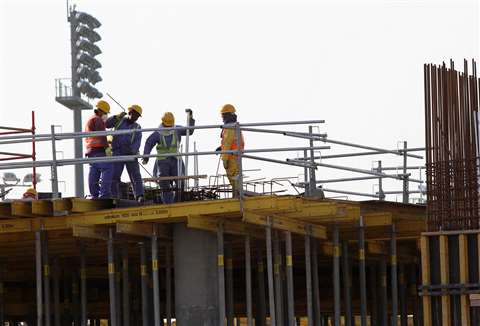 Migrant labourers work at a construction site at the Aspire Zone in Doha - Reuters
Migrant labourers work at a construction site at the Aspire Zone in Doha - Reuters
Eddie Tuttle, director of policy, research and public affairs at the UK-based Chartered Institute of Building (CIOB) which works to uphold standards in the construction industry around the world, says that main contractors focus almost exclusively on winning and managing projects, outsourcing the rest of the work to SMEs which make up around 90% of the industry. This means that work is passed on to small businesses which are hired on a weekly, daily or even hourly basis.
“The whole business model needs to change,” says Tuttle. “In the past, tier one contractors have had a hands-off attitude to what is going on with the sub-contractors they employ which goes to the heart of the issue. There needs to be far more onus on the supply chain.”
Tuttle says that the pandemic is likely to be making the problem worse. “At the moment we’re seeing a post-pandemic construction boom in nearly every country. With the skills gap and the fact that the industry is still not up to full capacity we worry that firms will be tempted to cut corners,” he says. “And the deeper you get down the supply chain the harder that is to manage.”
Qatar human rights
One of the areas where global contractors are currently facing most criticism over their alleged involvement in exploitative practices is the Middle East. In August, Amnesty International published a report accusing the Qatari authorities of failing to properly investigate the deaths of thousands of migrant construction workers between 2010 and 2019 despite evidence of unsafe, searingly-hot working conditions.
•Establish a solid whistle-blowing policy and ensure everyone is made aware of it
•Establish a worker forum to discuss issues •Ensure workers receive regular training specific to their area of the business raising awareness of modern slavery issues
•Ensure that the training is a mandatory part of workers’ inductions and that refreshers are provided each year
•Train managers on spotting the signs of forced labour and checking documents to ensure they are not forged
•Regular visits to the various sites, factories and warehouses in which suppliers are working, ensuring these are people-focussed and ask the right questions
•Regular desk-based audits of businesses, policies and procedures (including all suppliers)
•Have a strong remediation process in place - attempt to work with suppliers to fix problems when they emerge
•Create modern slavery champions at the different sites to keep an eye on things managers may not spot/ buddy schemes
•Audit data collected from workers to monitor factors like same address or bank accounts
•Collaborate with other like-minded businesses and charities to keep up with trends and patterns
Source: Unseen
And it is transnational construction companies, many of which are based in the West, which have been in charge of many of the giant building projects implemented in the decade running up to the 2022 World Cup.
In 2016, Amnesty said that some workers refurbishing the Khalifa stadium in Doha, scheduled to host one of the World Cup semi-finals, appeared to have been subjected to forced labour.
Workers said they had taken out loans to pay recruitment-related fees, were paid lower salaries than those they were promised in their home countries, and suffered from irregular and delayed payment of their salaries. They said they were put up in squalid accommodation and had passports confiscated.
According to Amnesty, work on the high-profile project was carried out by a complex network of contractors and subcontractors. At the top of the chain, the main contractor was a joint venture between Six Construct, a subsidiary of Belgian company Besix, and Midmac, a Qatari construction company.
These companies then parcelled out work to other firms including Malaysian contractor Eversendai. For its part, Eversendai then relied on a number of labour supply companies, including Seven Hills and Blue Bay to supply migrant construction workers for its part of the project.
“While the abuses were under the direct supervision of Eversendai, the main contractor Midmac-Six Construct JV has overall responsibility for the World Cup site,” Amnesty said in its report. “By failing to ensure it carried out adequate due diligence with respect to all the labour rights of workers employed on the Khalifa Stadium refurbishment, whether these workers were on site for a month or a year, Midmac-Six Construct JV has also breached its responsibility to respect human rights.”
In response Besix said that it had “taken notice” of Amnesty’s findings and was fully cooperating with the organisation because it “shares Amnesty International’s concern for human rights in general and the welfare of migrant workers specifically.”
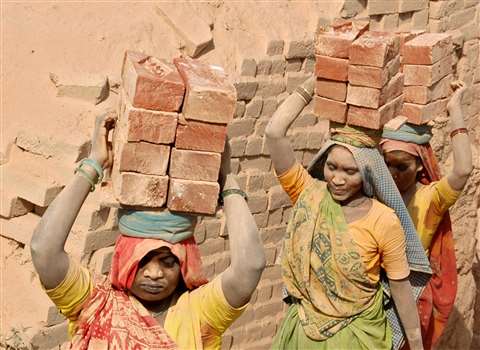 Avoiding using building materials produced through slave labour is also a key part of mitigating against modern slavery in the supply chain. Picture - Reuters
Avoiding using building materials produced through slave labour is also a key part of mitigating against modern slavery in the supply chain. Picture - Reuters
Besix added that it had already detected “issues” with the subcontractor concerned through its own inspections and rectified them six months before Amnesty first voiced its concerns. It added that it was open to suggestions to further improve its working processes.
Eversendai said it “applauds” Amnesty’s efforts and had identified “some shortcomings” in its workers accommodation in the past. However, it said that the matter had been “rectified.”
It also added that it had stopped dealing with both Seven Hills Trading and Blue Bay Contracting months before the report was published and is “engaging direct labour wherever possible in order to reduce the potential risks associated with engaging labour supply companies.”
Construction working conditions
Eversendai and Besix are not alone. Many of the major western construction companies operating in the Gulf have been accused of using local labour brokers which provide working conditions falling far short of international standards.
With just a year to go until the FIFA World Cup kicks off in Qatar, Amnesty’s global issues programme director Mark Dummett, said in November 2021 that, despite Qatar introducing some labour reforms over the last four years, little has changed in practice for construction workers and other migrant workers in the country who remain “at continued risk of exploitation by unscrupulous employers.”
Elsewhere in the world, forced labour and modern day slavery is being conducted even more openly. Nigerians attempting to flee to Europe to find work speak of being sold off at auction and forced to work on construction sites or do farm work for no pay. In China, Amnesty International says companies frequently withhold or delay payment to the country’s vast army of migrant construction workers.
In the US construction companies sometimes use labour brokers to supply cheap workers and to avoid federal and state tax payments, pay benefits or workers’ compensation insurance. In 2019, the United Brotherhood of Carpenters estimated that around 300,000 workers had been misclassified as independent contractors, creating a system open to abuse by unscrupulous operators looking to exploit illegal migrants.
Stronger Together’s Zielinski says that there are significant risks associated with construction companies using labour supply companies to source workers.
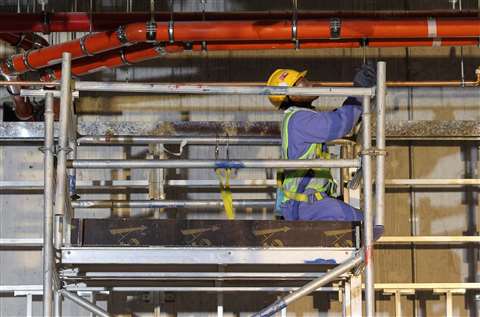 A labourer works on a Qatar Rail site in Doha - Reuters
A labourer works on a Qatar Rail site in Doha - Reuters
“It is extremely important for construction companies to map out their sub-contracting supply chain and to accept that if workers are on their site then they are their responsibility, even if they are hired by someone else,” she says. “We’re starting to see a raft of new legislation around the world come into force which means that companies are being held responsible for worker conditions all the way down their subcontracting chains.”
UK Modern Slavery Act
Zielinski points to the UK’s Modern Slavery Act which came into force in 2015 and requires companies operating in the UK to produce public statements outlining the actions they are taking to ensure their businesses and supply chains are free of slavery. A similar law came into force in Australia in 2018. And a French Corporate Duty of Vigilance law (loi de vigilance) was adopted by the French parliament in 2017. In the US, the 2015 Trade Facilitation and Trade Enforcement Act seeks to prevent goods produced using forced labour from being imported.
“Globally over the past few years there has been a gradual increase in companies’ understanding of the role they play in unwittingly contributing to modern slavery,” she says. “We are working with corporations in many different industries and different countries. Instead of the compliance focus which we had seen up until now, companies are starting to open up about looking at their supply chains and working out how to actively minimize risks and share best practice.”
Under the UK Act, firms operating in the UK which have an annual turnover of £36 million or more must publish an annual slavery and human trafficking statement detailing the parts of their businesses and supply chains where there is a risk of slavery taking place and the steps they have taken to assess and manage that risk.
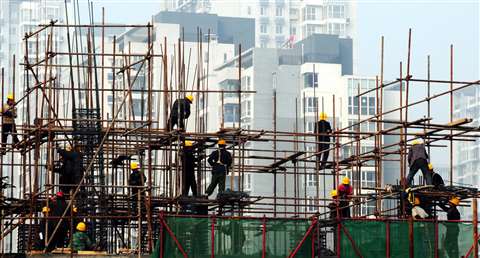 Chinese workers scaffold on a construction site in Beijing - Reuters
Chinese workers scaffold on a construction site in Beijing - Reuters
UK-based contractor Balfour Beatty, a company which has in the past itself faced criticism over the working practices of its former Qatari joint venture, has one of the most comprehensive statements seen by ICON when researching this article.
In its 2020-2021 statement, the company includes details of a pilot project its joint venture Balfour Beatty Vinci Systra is carrying out at the Old Oak Common station site in London in which all site workers are required to bring identification documents on their first day and to download the Unseen ant-slavery app to their mobiles – a lack of access to passports or a working mobile phone are two key indicators that modern slavery is taking place.
Balfour Beatty shares best practice
Other major steps the company highlights include requiring all of is suppliers, regardless of turnover, to have a modern slavery statement by 2025 and using one UK labour supplier since 2015 to manage all of its staff recruitment. The company also says it recently conducted a heatmapping exercise to identify the highest risk areas of its supply chain and, as a result of this, briefly stopped orders for PPE in 2020 after asking one of its suppliers to conduct a supply-chain audit which revealed that a supplier in Chile had subcontractors in Xinjiang, China where evidence has emerged of widespread human rights violations.
Organisations such as Anti-Slavery International go further, calling for Mandatory Human Rights and Environmental Due Diligence (MHREDD) legislation to hold large companies responsible for rights abuses in their supply chains.
“Audits are not a reliable approach to identify the risks of forced labour in supply chains due to the fact that forced labour is often hidden,” says Anti-Slavery International’s Domingo Ramos. “Companies should strive to understand the root causes of modern slavery in the locations of their operations, working with civil society organisations including grass roots NGOs, trade unions and academics.”
“The Act needs legal teeth,” says Zielinksi. “But companies don’t want to be caught sleeping at the wheel. The logical conclusion of this sort of legislation is that it could be brought in line with corporate manslaughter legislation which carries a maximum prison sentence of life imprisonment.”
How can legislation prevent construction slavery?
Back in the UK, Frank’s rescuers say that no amount of legislation can completely eradicate slavery from the construction industry.
“It is impossible for businesses to be 100% certain that there is no modern slavery taking place within their supply chain, exploiters are smart and learn new tricks all the time. The key is to have all the processes in place, ensure all workers are aware of these processes and feel confident in them,” says Lucy Mann, business account manager at Unseen.
“Workers need to feel safe, and if they don’t feel safe, they need to know what to do to get the businesses support to remediate this. It’s all about continuous improvement, continue to work with charities and third parties who have the knowledge of the issue and keep doing/ learning what else you could be doing to avoid any issues of modern slavery.”
STAY CONNECTED



Receive the information you need when you need it through our world-leading magazines, newsletters and daily briefings.
CONNECT WITH THE TEAM








